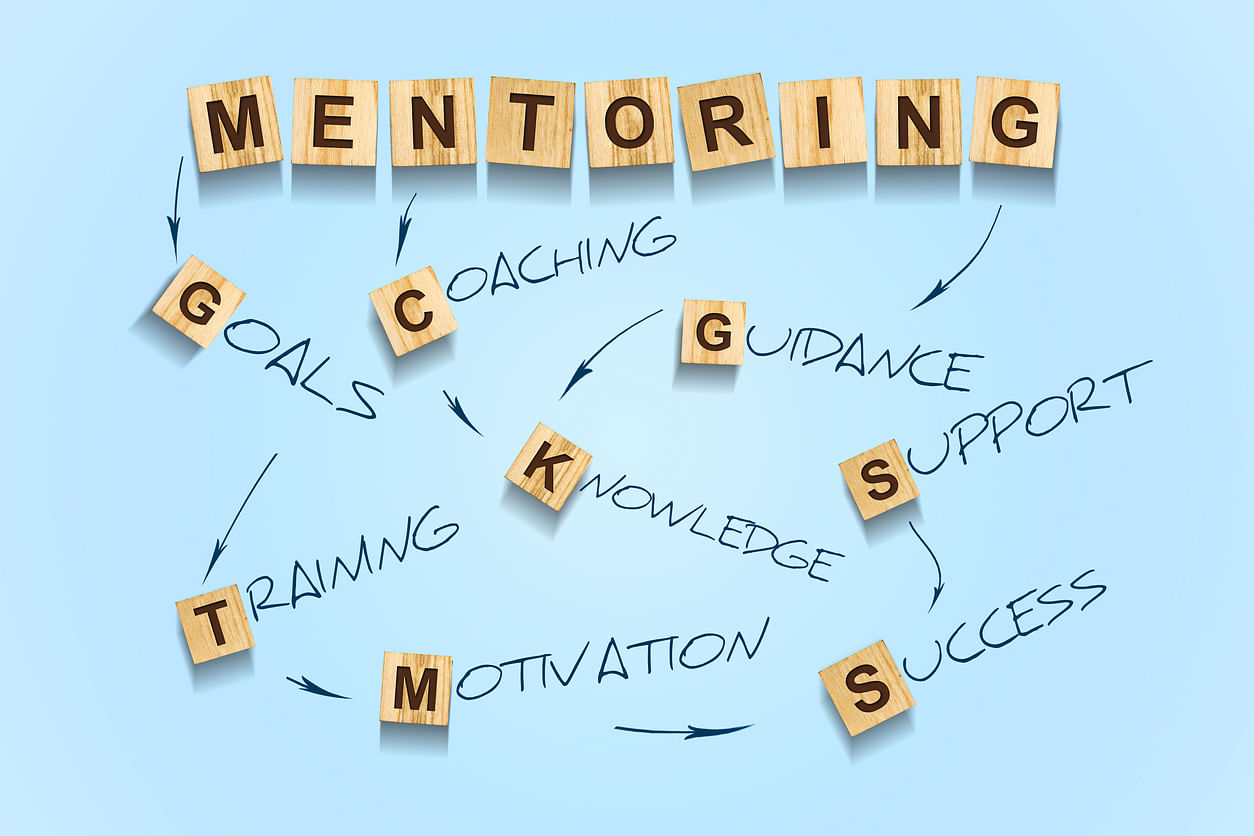
Individual and institutional capacity-building/empowerment is the hallmark of a vibrant academic institution. They define the quality of educational services and outcomes of the institution. I wish to explore the different dimensions of mentoring and how it could be utilized as a human performance and institutional services-booster.
Although the word ‘mentor’ is largely perceived to be of Greek origin and adopted by American and European educational institutions in the 1970s, the ‘Guru-Shishya parampara’ of ancient India is no less significant. Because of the popularity of the term ‘mentor’, we can use it for easy communication.
There are many definitions of the term ‘mentor’, but all distil down to a system of guidance from a more knowledgeable person to a learner or student or, taken to higher platitudes, a seeker of knowledge. In the contemporary context, mentors are like academic parents (as compared to biological parents at home) who adopt a student or a group of students to monitor their academic progress in the institution.
The mentor offers not only academic help but also other support, including psychological counselling, to help the student perform to his/her full potential. As a strategy, the mentor acts as a communication bridge between the student, on one hand, and the parents and institutional head, on the other, to maximize the outcomes of student support system.
Given the positive impact of mentorship on student performance, it deserves to be State policy to make it mandatory in all educational institutions, particularly in government schools and colleges, where its need is felt the most.
Salient features:
a. Mentorship to be adopted as State policy in all government and aided educational institutions
b. Ideally a group of 20 students should be assigned to one teacher-mentor
c. The above should be implemented soon after the admission of a student to an educational institution
d. A mentor conducts evaluative meetings of the assigned students once a month to make a SWOC (Strengths, Weaknesses, Opportunities, Challenges) analysis of each student to chalk out a case-by-case action plan for the academic advancement of the student. For example, appropriate strategies are necessary to deal with slow learners, advanced slow learners, the emotionally challenged, physically challenged, artistically talented, those inclined towards athletics and sports.
e. Additionally, professional psychological counselling should be provided. Students from disadvantaged sections, advanced learners, women empowerment, innately talented students in performing arts and sports need due attention.
f. The mentor would bring the periodic, evaluative reports and all related documents to the notice of the head of the institution, keeping the parents also in the communication loop.
g. Either the mentor or the institutional administration should involve parents in the mentorship mechanism to maximize the outcome of the exercise by establishing a functional network of student, parent, mentor and institution.
h. The mentor should bring to the notice of the head of the institution the financial, hostel or any other difficulties of the student so that they could be resolved to enable the latter to focus only on academic challenges.
i. In sum, the institution should be dedicated to the overall development of the student by discharging its social responsibilities. Ultimately, empowering a student should mean empowerment of the nation in letter and spirit.
‘Institutional Mentoring’ is a new dimension in capacity-building. The concept of mentoring could be enlarged to add a novel dimension to empower educational institutions in Karnataka – higher-level institutions to mentor (offer their academic expertise) lower-level institutions.
This mechanism would also add a new dimension to the extension activities of the mentoring institutions. For example, reputed schools and universities could offer their expertise to establish contemporary academic infrastructure in government and aided schools and colleges, commensurate with the 21st-century knowledge-based educational activities and services.
1. Government and aided schools could avail the academic expertise of nearby reputed higher educational institutions, particularly from those involved in teacher education to update their classroom teaching-learning activities
2. Government and aided/autonomous colleges could avail academic expertise from nearby universities to update their academic infrastructure and programmes in line with the National Education Policy and the goals and objectives set by the Karnataka State Higher Education Council (KSHEC). Following are a few chosen areas:
a) Infusion of employable skills in undergraduate education through Liberal Arts degrees and similar courses in science
b) Prime the colleges and autonomous colleges to prepare for NAAC Self Assessment Reports and peer committee visits. Each university may constitute a panel of experts and post the same on their official websites so that colleges may utilize their expertise based on their academic needs (Commerce, Arts, Science, Education etc.)
c) Universities under AICTE, MCI, BCI may also be included as expert institutions to establish academic infrastructure in colleges and autonomous colleges.
d) IITs, IIITs, IISc and other national institutions should be requested to help align the state universities with national and global endeavours. If necessary, the state government may enter into MoUs with these institutions through KSHEC. Their guidance would be invaluable to our higher education institutions to orient their academic activities to nationally relevant and globally sensitive issues which have enormous potential to build a knowledge-mediated economy of the 21st century.
The above holistic approach to mentoring is a creative solution to use a broad spectrum mentoring system to its full potential to recharge not only individual students but whole educational institutions at all levels.
If developed and implemented appropriately in a collaborative mode within the framework of the National Education Policy on anvil, the above scheme has all the potential to recharge all levels of education, from KG to PG, and be a model worthy of emulation by other states.
(The writer is Chancellor, PES University, and Adviser to the Government of Karnataka on education reforms)